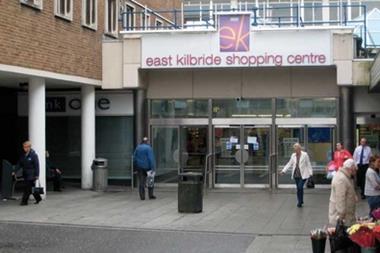Royal Bank of Scotland, the institution of choice for banker bashing, was back in the firing line on Wednesday during its AGM in Edinburgh, when chief executive Ross McEwan was unsurprisingly grilled on the £3.4bn of bonuses the bank has paid out over the past four years.
With much of the banking sector appearing detached from the reality of the economy, it is questionable whether the eye-watering sums are justified or not.
What is clear, though, is that those leading the clearout of the bank’s property portfolio are motoring and the prices they are achieving are eye-catching.
It wasn’t always so. The scale of the problems RBS faced in 2009 meant that it couldn’t possibly take the losses on asset sales that Lloyds was able to. After the crash, Lloyds moved quickly, selling assets and dominating the loan portfolio market in particular between 2011 and 2013.
Lloyds became popular with the industry, at least in part, for providing stock to buy when there was a dearth. Meanwhile, RBS was bemoaned for holding tight.
It also irritated investors by buying assets through West Register, its property division that until April had the role of making bids in the open market for properties put up for sale by receivers or administrators of properties with bad RBS loans held against them, thus putting in place a reserve price.
The two strategies were in stark contrast and Lloyds will have gained an advantage by recouping capital quickly, and being almost the sole focus of attention for buyers for a prolonged period.
But whether by luck or judgement, RBS’s timing is looking sweet. The market it is now selling into is so hot that surpluses on book values are being achieved for many sales.
It is currently selling the £710m Project Swallowtail, comprising six shopping centres and the retail park Fosse Park, as well as two shopping centres in East Kilbride and Wolverhampton for a combined £225m. In Manchester it is close to selling the £310m Spinningfields campus.
They are being sold at a time of soaring demand in top-quality regional assets, with London becoming too steamy for many, plus the retail market has rebounded.
Even in Ireland, where RBS made its biggest mistakes through its subsidiary Ulster Bank, its loan portfolio sales are racing away in the form of the €710m Project Button that was sold to Davidson Kempner in May and the €600m Project Mansell, which is being prepared for sale.
This is combined with the second sale by the bank of a UK mixed-asset portfolio. The £88m Silverbird portfolio may only be small, but it comes at a time when there is a ferocious appetite for portfolios with collections of assets being sold at a premium rather than a discount. Institutions and REITs are now fighting private equity to get hold of assets.
The appetite for portfolios will be crucial for RBS in the next 18 months as this will be a way of clearing out its smaller assets rather than the big lumps it is generally dealing with now.
The unforgiveable mistakes made by bankers at RBS during the boom should not blight those handling many of the largest transactions in the UK market and working to recoup as much as possible for its taxpaying owner.
Handing them billions in bonuses might be excessive, but for the property team there should certainly be a few pats on the back.






























No comments yet